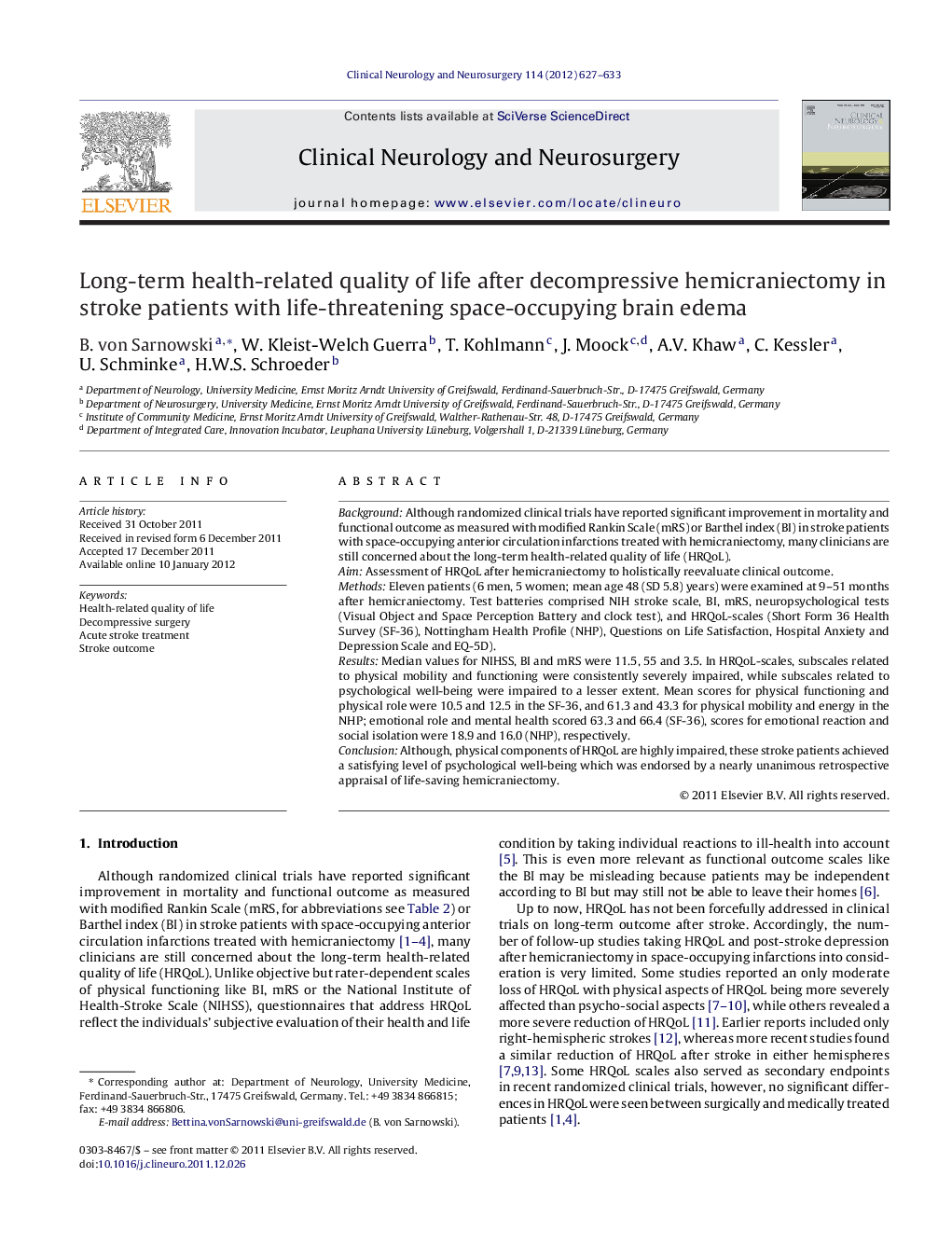| Article ID | Journal | Published Year | Pages | File Type |
|---|---|---|---|---|
| 3040813 | Clinical Neurology and Neurosurgery | 2012 | 7 Pages |
BackgroundAlthough randomized clinical trials have reported significant improvement in mortality and functional outcome as measured with modified Rankin Scale (mRS) or Barthel index (BI) in stroke patients with space-occupying anterior circulation infarctions treated with hemicraniectomy, many clinicians are still concerned about the long-term health-related quality of life (HRQoL).AimAssessment of HRQoL after hemicraniectomy to holistically reevaluate clinical outcome.MethodsEleven patients (6 men, 5 women; mean age 48 (SD 5.8) years) were examined at 9–51 months after hemicraniectomy. Test batteries comprised NIH stroke scale, BI, mRS, neuropsychological tests (Visual Object and Space Perception Battery and clock test), and HRQoL-scales (Short Form 36 Health Survey (SF-36), Nottingham Health Profile (NHP), Questions on Life Satisfaction, Hospital Anxiety and Depression Scale and EQ-5D).ResultsMedian values for NIHSS, BI and mRS were 11.5, 55 and 3.5. In HRQoL-scales, subscales related to physical mobility and functioning were consistently severely impaired, while subscales related to psychological well-being were impaired to a lesser extent. Mean scores for physical functioning and physical role were 10.5 and 12.5 in the SF-36, and 61.3 and 43.3 for physical mobility and energy in the NHP; emotional role and mental health scored 63.3 and 66.4 (SF-36), scores for emotional reaction and social isolation were 18.9 and 16.0 (NHP), respectively.ConclusionAlthough, physical components of HRQoL are highly impaired, these stroke patients achieved a satisfying level of psychological well-being which was endorsed by a nearly unanimous retrospective appraisal of life-saving hemicraniectomy.
